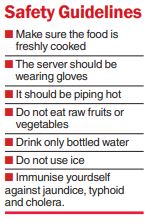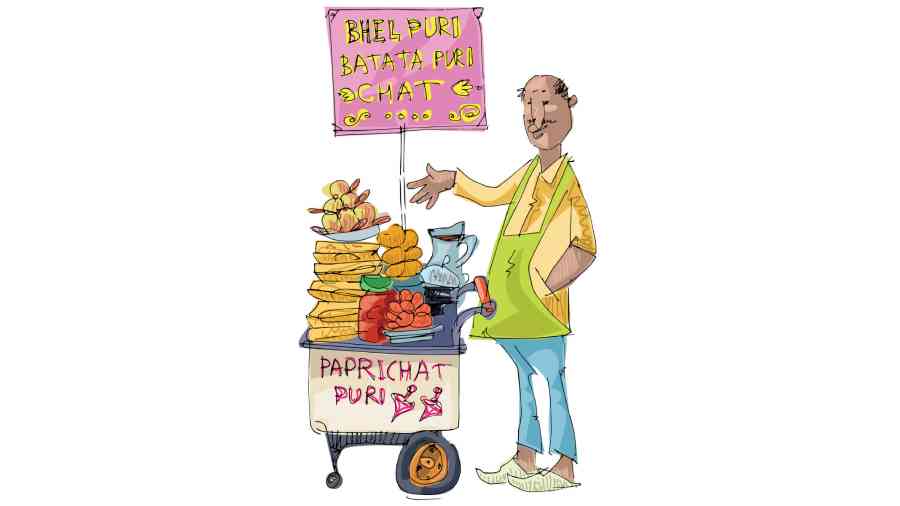I was driving when I noticed a cart selling samosas on the street. The uncooked samosas were black in colour. Intrigued, I looked closely, only to find they were covered with a swarm of black flies.
Many people eat street food, especially youngsters, standing around open carts with friends, chatting and laughing as they consume tasty calories. (They do not notice the flies).
As far as food is concerned, people are spoilt for choice these days. They can eat a variety of cuisines from various regions in India, like idlies, chola batura and the all-time favourite panipuri as well as international favourites like noodles and burgers.
It is true that street food has many advantages. First, it is inexpensive. Unlike hotels and restaurants that open and close at fixed times, it is available almost all day and night. There is no need to wait for a table or no delay in being served your order. Also, food in a restaurant costs twice or thrice as much as that available on the street.
Unfortunately, this food is often served in unhealthy conditions. The carts are open to dust, pollution and flies, which carry a variety of diseases. Street dogs can smell the food and, given a chance, will place their mouths on it. Though the water is kept in buckets to wash the used dishes, this is often not done. Neither the customers nor the servers are able to wash their hands before touching the food. The food itself is often wrapped in unclean newspapers.
Oil is expensive. Instead of discarding used oil, it is just topped up as the level drops. The burnt sediment settles in the oil. It changes colour. It starts to boil and smokes at lower temperatures. This affects the cooking. Sometimes the oils may change in colour and composition to produce harmful and carcinogenic chemicals. Oil can be reused for one or two days, but it should not be topped up. It should be strained before each reuse and kept in an airtight container.

Juices served on the street contain unclean ice and unpurified water. The fruit used is touched with the hands before being processed. The savouries and snacks are picked up with ungloved hands. There are no toilets or washing facilities nearby.
The disadvantage of eating street food is that it may be contaminated with viruses or bacteria. Food poisoning can occur within 24 hours with stomach pain, vomiting, diarrhoea, body ache and fever. It is due to toxins released by the contaminating organisms. The bacteria may have died, but the toxins are long-lasting and heat-stable. They remain in the food and survive reheating. Viral diarrhoea produced by contamination produces identical symptoms. Neither type of responds to antibiotics.
The raw ingredients, masala and colouring may be substandard and not food-grade. This can occur because, unlike licensed and inspected restaurants, food stalls are not under the control of the government. Therefore, they do not have to conform to rules and rigorous regulations.
Cholera, typhoid, jaundice, salmonellosis, giardia and amoebiasis also can develop from contaminated street food. The symptoms last longer. Specific antibiotics and medications are needed to treat them.
It is tempting to eat street food because of the social setting and companionship, not to forget the price. However, not all street food is bad. If you want to eat street food, take it home in a container and heat it well. This will destroy contaminating viruses and bacteria. It will not, however, prevent food poisoning. You may also develop stomach pain because it is spicy or may have an allergic reaction to the ingredients.
The writer has a family practice at Vellore and is the author of Staying Healthy in Modern India. If you have any questions on health issues please write to yourhealthgm@yahoo.co.in











